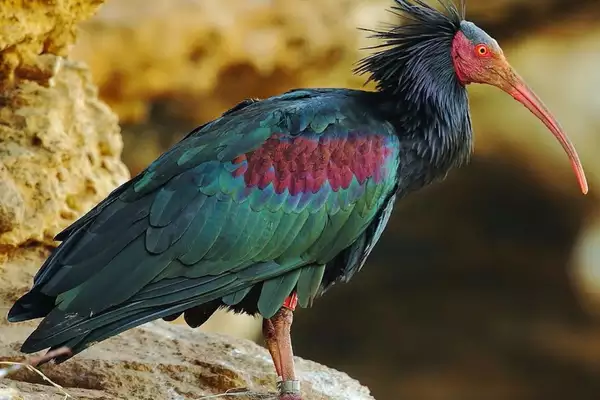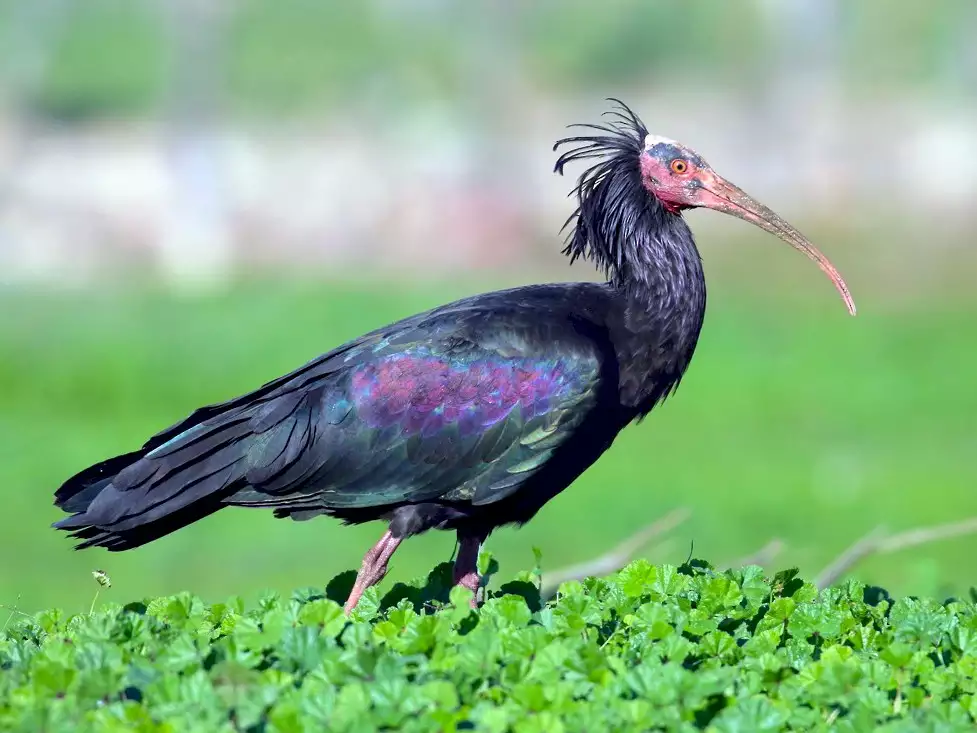The northern bald ibis, once extinct in Europe, has been successfully reintroduced through conservation efforts.
About the northern bald ibis:
- The northern bald ibis (Geronticus eremita), also known as Waldrapp or hermit ibis, is a migratory Old World ibis.
- It was historically found in Europe, North Africa, and the Arabian Peninsula.
- Geographical Range: Historically found in the European Alps, North Africa, and the Middle East.
Habitat:
- Preferred Environments: Semi-arid deserts and steppe regions.
- Feeding Areas: Rocky areas or cliffs near streams or rivers.
Behaviour
- Social Structure: Colonial, living in groups.
- Migration: Seasonally migratory, traveling in flocks to their wintering grounds.
- Guidance: Newly reintroduced birds require guidance to learn migration routes, as they lack instinctual knowledge of direction.
Reproduction:
- Mating System: Monogamous, forming lifelong pair bonds.
- Mate Selection: Partners are identified through a distinctive croop call.
Extinction:
- By the 17th century, it was hunted to near extinction in Europe. The species survived in a few colonies outside Europe.
Conservation Status:
- IUCN Status: Endangered
- CITES: Appendix I
Ref: Source
| UPSC IAS Preparation Resources | |
| Current Affairs Analysis | Topperspedia |
| GS Shots | Simply Explained |
| Daily Flash Cards | Daily Quiz |
Frequently Asked Question:
Where was the northern bald ibis historically found?
The northern bald ibis was historically found in Europe, North Africa, and the Middle East.
What is the preferred habitat of the northern bald ibis?
The northern bald ibis prefers semi-arid deserts and steppe regions for their habitats.
How do newly reintroduced northern bald ibis learn migration routes?
Newly reintroduced birds require guidance to learn migration routes as they lack instinctual knowledge of direction.
What is the mating system of the northern bald ibis?
The northern bald ibis has a monogamous mating system, forming lifelong pair bonds.
How do northern bald ibis identify their partners?
Partners are identified through a distinctive croop call made by the northern bald ibis.



